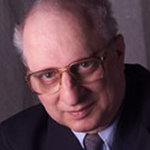October 22, 2015
The right to die
Physicians and others in the health care field are trying to get their heads around the reality of the coming into effect next February of the Supreme Court decision permitting euthanasia and assisted dying.
That is why the Champlain Centre for Health Care Ethics held a symposium on the subject on September 30 at Ottawa’s Perley and Rideau Veterans’ Health Centre. But there was an elephant in the room.
Dr. Thomas Foreman, Director of the Champlain Centre, spelled out the essentials of the situation. The Court, in the case of Carter v. Canada, found the Criminal Code provision prohibiting physician-assisted dying to be an infringement on the individual’s Charter right to life, liberty, and security of the person and gave the government till next February to bring in the necessary legislation to regulate the practice.
Failing the adoption of appropriate legislation, the door will be wide open, with no guidelines. The Harper government has asked the Court to allow an extension of the deadline, but such a request is most unusual, and there is no certainty that it will be granted. Rather late in the game, the current government appointed a committee to come up with proposed guidelines. However, it appointed people opposed to assisted dying.
The Court found a blanket prohibition to be overreaching. It held that a person has a right to physician-assisted dying where suffering becomes intolerable, grievous, and irremediable. The determination of that point is not made by a physician. Rather, it is up to the person. However, only a person who is competent may be able to make that decision. And here is where the elephant comes charging through the door.
Only a competent person has the capacity to request assisted dying. What, then, of those suffering from a mental illness, especially depression?
Many people suffering from some kind and level of depression are competent. Yet, treatment, with medication for example, can often provide significant relief. Sorting out this conundrum demands a significant input from psychiatry. Organizers of the symposium asked the Royal Ottawa Hospital, a psychiatric facility, for someone to take part in the symposium, but no one was made available.
It was the Court’s opinion that there would be no danger of a slippery slope of violating patients’ rights if the practice is well regulated and controlled. However, the decision is broad. Take by comparison the legislation in Oregon. There the person to be aided in dying has to be within an estimated six months’ end of life.
We gave as an example a social worker with incipient Alzheimer’s disease. She was a patient whose life Jack Kevorkian ended. She knew the prognosis for her condition and she wanted none of that. She wanted out. In Oregon, she would have been out of luck, but under the Court’s decision it would have been a go.
The issue of regulating the practice is not the only difficulty. Another factor is that of doctors’ participation.
The Supreme Court recognized the right to conscientious objection to participation. Here we face the same situation that exists with abortion. A person wanting aid in dying needs to have access to a willing physician, either in a willing facility or at home.
Dr. Andrew Mai, Medical Director of Hospice Care Ottawa, addressed the problem from the standpoint of hospices. While he did not mention it, Quebec, the one Canadian jurisdiction that has adopted right-to-die legislation, which comes into effect later this year, is faced with a total opt-out by the province’s hospices.
Speaking to the Ontario situation, Mai noted that hospices must rely on non-governmental funding for 35% of their costs. The closest thing that hospices have to assisted dying is palliative sedation, but that procedure involves use of the least possible dose of the medication and cannot be used to shorten life. And that procedure is very rarely used in hospices, never in his experience in Ottawa.
What would be the implication for the various players in the hospice?
Take front-line workers. Many might be conscientious objectors. Some might leave. Such a change in the role of the hospice might also threaten the volunteer component, which is a major source of labor at many levels in hospices. Substantial charitable contributions might be lost.
Then there are practical questions related to the patient. What happens when he asks for aid in dying? Is he sent to another facility or home? Mai thinks that that might be seen as cruel.
The whole issue of physician-assisted dying and euthanasia may be summed up by saying that it is no one’s responsibility.
Alternatively, we can point to the Harper government’s clumsy foot-dragging in failing to address the Supreme Court’s deadline.








